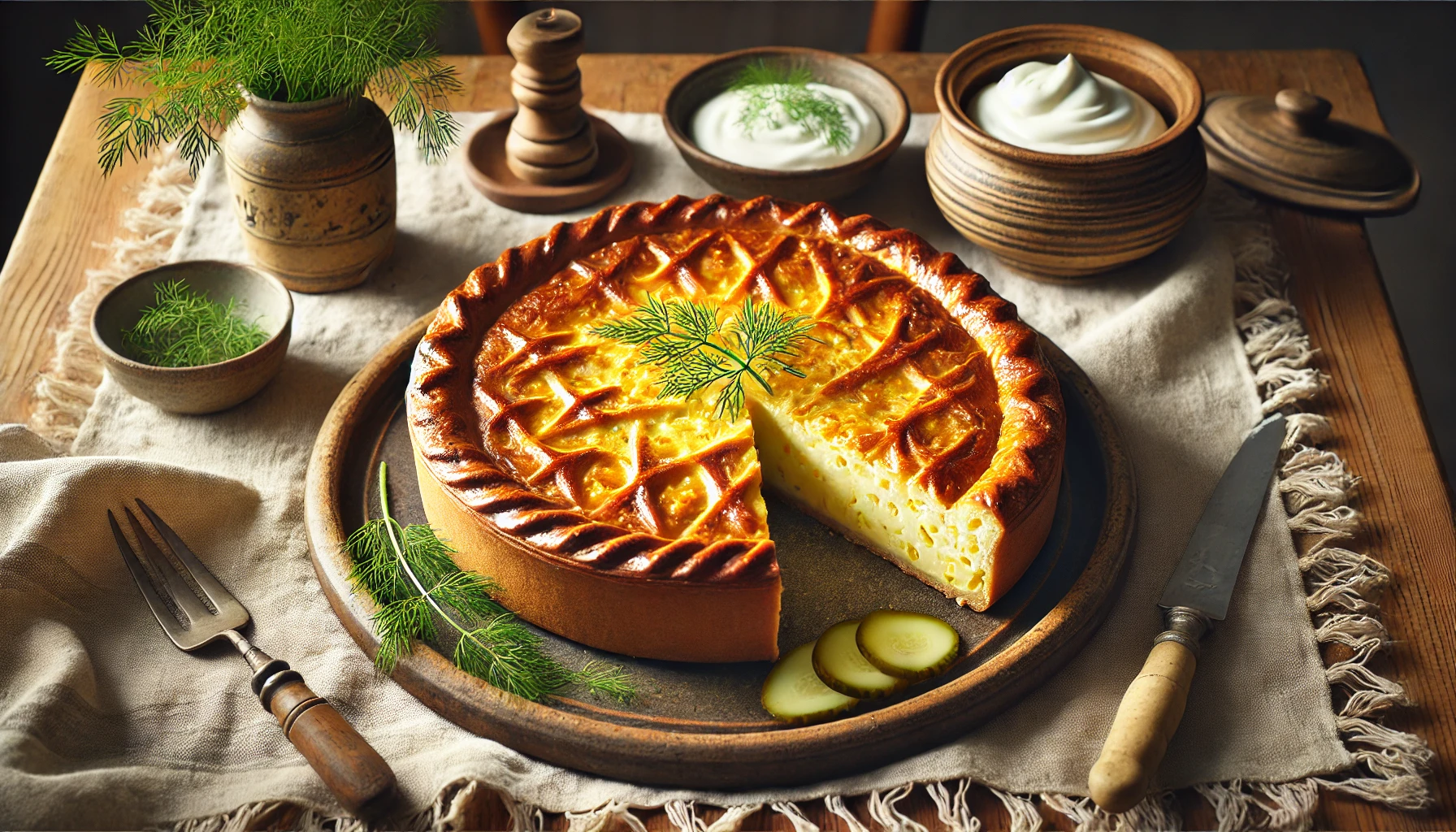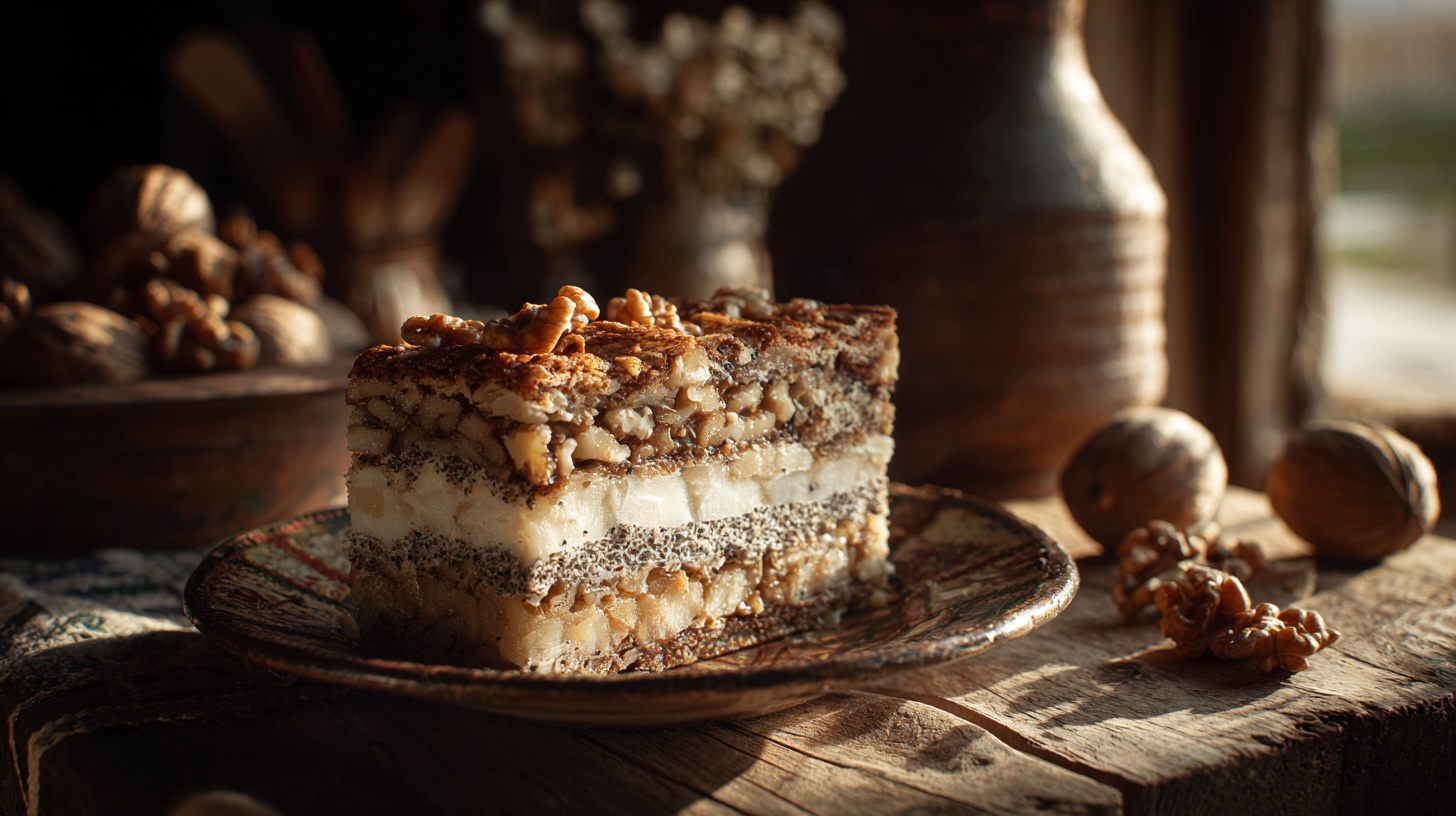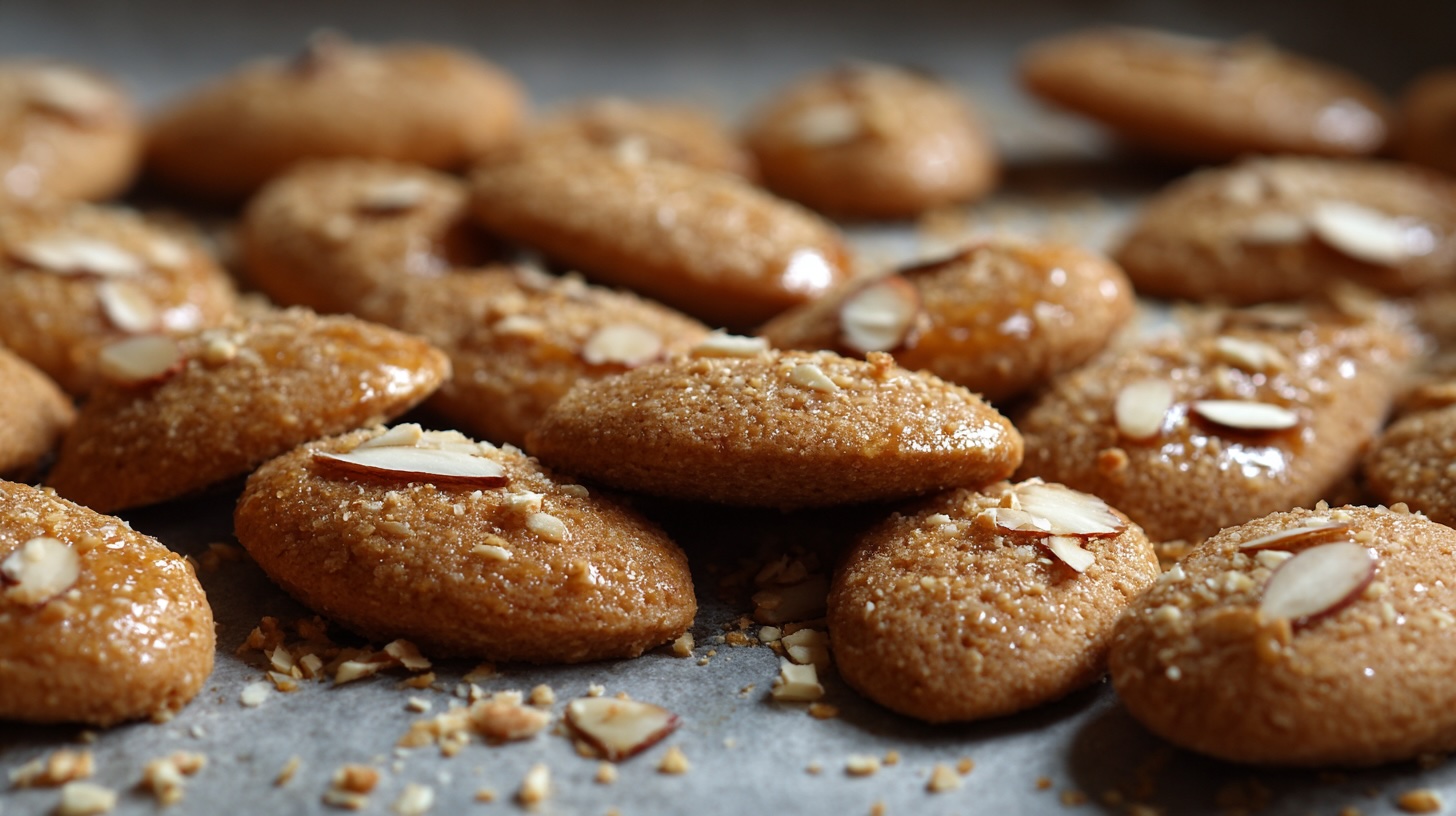Västerbottensost pie: The Creamy Swedish Cheese Delight
Origins of Västerbottensost pie
The historical roots of Västerbottensost pie can be traced back to the rich culinary traditions of the Västerbotten region in Sweden. Known for its expansive landscapes and distinct agricultural practices, this northern region has long been a hub for dairy farming, which has significantly influenced local cuisine. The unique qualities of Västerbotten cheese, made from raw cow’s milk, laid the foundation for the pie that bears its name. This cheese, prized for its robust flavor and crumbly texture, is a critical component of Västerbottensostpaj, contributing to its creamy consistency and rich taste.
The creation of Västerbottensostpaj dates back to the early 20th century when it gained popularity as a savory dish served during festive occasions and family gatherings. The traditional preparation involves a pastry crust filled with a mixture of Västerbotten cheese, cream, eggs, and various seasonings, reflecting the simplicity and heartiness of Swedish comfort food. Over time, this dish has evolved, yet it remains firmly rooted in its origins, symbolizing the values of resourcefulness and sustainability inherent in Swedish cooking.
Culturally, Västerbottensostpaj holds a special place in Swedish gastronomy, often featured at traditional events and family celebrations. It serves not just as a meal, but as a representation of local pride and culinary heritage. With its unique flavor profile and smooth texture, the Västerbottensostpaj is more than just a pie; it is a tribute to the craftsmanship of local cheesemakers and the resources of the surrounding land. As such, this pie is not simply a dish, but a narrative woven into the fabric of Swedish culture and a delicious reflection of the region’s identity.
The Unique Ingredients
The quintessential Västerbottensostpaj is celebrated for its distinctive flavor, which largely stems from its centerpiece ingredient: Västerbotten cheese. Originating from the Västerbotten region in Sweden, this cheese is notably aged for a minimum of 14 months, which contributes to its rich and complex flavor profile. It possesses a unique combination of sharpness and nuttiness, enhanced by a creamy texture. While it can be somewhat difficult to find outside of Sweden, there are substitutes that can evoke a similar taste, such as aged Gruyère or a mix of sharp cheddar and Parmesan.
In addition to this remarkable cheese, the creamy custard filling is another essential component that elevates the Västerbottensostpaj. This custard is typically composed of whole eggs, heavy cream, and a touch of milk, which creates a luscious and silky texture that envelops the cheese perfectly. The harmonious blend of these ingredients ensures that the pie retains its moisture while simultaneously allowing the cheese flavor to shine through.
The pastry used in Västerbottensostpaj warrants attention as well. Often crafted from a simple mixture of flour, butter, and water, the pastry should be flaky yet sturdy enough to hold the custard and cheese filling without breaking. A perfectly baked crust provides a delightful contrast to the creamy interior, enhancing the overall eating experience. Some recipes may include additional components such as finely chopped onions or herbs, which can complement the cheese’s flavor without overshadowing its distinctive qualities.
In conclusion, the unique ingredients that comprise Västerbottensostpaj, from the aged Västerbotten cheese to the creamy custard and flaky pastry, come together to create a delicious dish that is both simple and sophisticated. The balance of flavors and textures is an invitation to explore Swedish culinary traditions in a single, satisfying pie.
Traditional Recipes and Variations
Västerbottensostpaj, a beloved Swedish cheese pie, can be prepared using various traditional recipes that highlight the distinctive flavor of Västerbotten cheese. Below are classic and contemporary adaptations to suit different tastes.
One of the most traditional recipes starts with a savory pastry crust made from flour, butter, and water. The ingredients are mixed until they form a dough, which is then chilled before rolling it into a tart pan. For the filling, finely grated Västerbotten cheese is combined with eggs, cream, and a pinch of nutmeg. This mixture is poured into the prepared crust and baked at 200 degrees Celsius for about 30 minutes or until the top is golden brown and set. This classic version showcases the cheese’s rich and creamy texture, making it an excellent choice for gatherings.
A modern twist on the dish can incorporate different cheeses or herbs to enhance the flavor profile. For instance, substituting a portion of Västerbotten cheese with goat cheese creates a tangy variation, while adding fresh herbs, such as thyme or dill, introduces a delightful freshness to the pie. The preparation remains quite similar; however, the alternative cheeses must be balanced to maintain the integrity of the dish.
Vegetarian variations are also popular. A recipe involving a medley of sautéed vegetables like spinach and mushrooms can be incorporated alongside the cheese mixture. The savory vegetables not only add nutrition but also a wealth of flavors that complement the cheese beautifully. They can be layered between the cheese filling for a visually appealing and wholesome option.
In conclusion, whether opting for a classic Västerbottensostpaj or experimenting with contemporary variations, the versatility of this dish ensures it caters to diverse palates while maintaining its core identity as a creamy cheese pie, pivotal to Swedish cuisine.
The Cultural Significance of Västerbottensostpaj
Västerbottensostpaj, a savory pie made from Västerbotten cheese, holds a prominent place in Swedish culinary traditions. Its origins can be traced back to the northern regions of Sweden, where the unique flavors of this cheese have contributed to a rich gastronomic heritage. Often served during festive occasions, the pie represents more than just a dish; it symbolizes the values of togetherness and communal dining.
This delectable cheese pie is commonly found at various traditional gatherings, including midsummer celebrations, Christmas feasts, and weddings. During these events, Västerbottensostpaj is cherished not only for its creamy texture and rich flavor but also for the memories it evokes. Families often share anecdotes about how this recipe has been passed down through generations, with each family adding their own twist to the preparation. Such stories foster a sense of community, as people bond over shared experiences tied to the dish.
Furthermore, Västerbottensostpaj features prominently in Swedish hospitality, serving as a staple at buffets and potlucks. It is often accompanied by local delicacies, allowing guests to sample a variety of regional flavors. Its presence in informal gatherings, along with formal celebrations, highlights its versatility and significance in Swedish culture.
As Swedish families gather around the dining table, the act of sharing Västerbottensostpaj transcends mere nourishment; it embodies cultural identity and familial connections. Each pie reflects the heritage of its maker, revealing stories and traditions that are part of Sweden’s communal tapestry. Overall, the role of Västerbottensostpaj in festive occasions offers a glimpse into the heart of Swedish culture, where food acts as a binding agent among generations.
Humour and Popular Jokes Surrounding the Pie
Västerbottensostpaj, the beloved Swedish cheese pie, has become a frequent subject of humor and joy within Swedish culture. This delightful dish, known for its rich and creamy texture, not only satisfies the palate but also inspires laughter through a variety of jokes and anecdotes. Its reputation extends beyond the dinner table, permeating social gatherings and online platforms where it is fondly acknowledged and playfully teased.
One can often find humorous quips about Västerbottensostpaj on social media, with users creatively adding their perspectives on how this cheesy marvel is the ultimate comfort food. Popular memes depict the pie as a culinary savior during dire times, suggesting comical scenarios where individuals turn to Västerbottensostpaj for emotional support or companionship. This comedic angle not only showcases the pie’s popularity but also highlights the endearing connection many have with it.
In the realm of Swedish comedy, Västerbottensostpaj has been featured in various sketches and stand-up routines. Comedians frequently utilize the dish as a humorous metaphor, likening its comforting qualities to the joys of life and love. Classic one-liners often revolve around the struggles of sharing a pie, with jesters crafting dialogues about the intense debates surrounding the best toppings or the rightful portion sizes. “Why did the chef break up with their partner? They couldn’t share the last slice of Västerbottensostpaj!” is one example that brings light-hearted fun to any conversation about this iconic dish.
Additionally, folklore surrounding Västerbottensostpaj often includes amusing tales that celebrate its role in community gatherings and festive occasions. The pie is not merely a food item; it has transcended into a cultural phenomenon, creating bonds and provoking laughter among friends and families. When one shares a slice of Västerbottensostpaj, they also share a piece of joy and laughter, highlighting the profound impact of this dish in Swedish culinary heritage.
Where to Find the Best Västerbottensost pie
Västerbottensostpaj, a delicacy of Swedish cuisine, is not only celebrated for its rich, creamy texture but also for its unique flavor profile, derived from Swedish Västerbotten cheese. To find an authentic version of this cheese pie, one can explore various avenues, including local bakeries, restaurants, and specialty food stores located across Sweden.
Many eateries in Sweden proudly serve västerbottensostpaj as a signature dish. For instance, establishments in Umeå and Skellefteå are renowned for their traditional preparation methods, often using recipes passed down through generations. Restaurants highlighting local cuisine frequently feature this pie on their menus, ensuring that diners experience its authentic taste. Noteworthy restaurants to visit include Restaurang Källhuset in Umeå, where the västerbottensostpaj is served both as a starter and as a main course, paired with delightful accompaniments.
Additionally, several bakeries have embraced the tradition of crafting homemade västerbottensostpaj. A visit to your local konditori can often yield a freshly baked pie that perfectly balances the richness of Västerbotten cheese with the lightness of a flaky crust. These bakeries often also provide seasonal variations, incorporating local ingredients, which can enhance the traditional taste experience.
For those interested in preparing the dish at home, specialty food stores and online retailers offer Västerbotten cheese, a key ingredient in making an authentic västerbottensostpaj. Quality cheese can be found in gourmet shops throughout Sweden, or you may consider visiting farmer’s markets for artisanal options. By selecting the right cheese, home cooks can replicate the flavors of this beloved dish.
Exploring the culinary landscape of Sweden reveals numerous opportunities to savor the distinctive taste of västerbottensostpaj, ensuring that both locals and visitors can appreciate the creamy, cheesy delight it offers.
Tips for Perfecting Your Own Pie
Creating a delightful Västerbottensostpaj at home requires attention to detail and an understanding of some essential cooking techniques. To begin, one of the most critical aspects is the quality of ingredients. The star of the dish, Västerbottensost cheese, should ideally be aged, as this enhances its flavor profile and contributes to a creamier texture. Sourcing authentic Västerbottensost cheese from reputable suppliers will undoubtedly elevate your pie, providing an authentic taste that is characteristic of this traditional Swedish delicacy.
Another common pitfall when preparing a Västerbottensostpaj is the incorrect handling of the pastry. It is vital to ensure that the dough is not overworked; when this occurs, the pie crust can become tough and chewy, detracting from the overall experience. For a perfectly flaky pastry, incorporate cold butter and cold water, and handle the dough minimally. Letting the dough rest in the refrigerator before rolling it out is also recommended, as this allows the gluten to relax, yielding a tender crust.
Timing and baking temperatures are equally important in achieving the ideal pie. Preheat your oven properly, as starting with the right temperature can make a significant difference. An often recommended baking temperature for Västerbottensostpaj is around 200°C (400°F), ensuring the crust turns golden brown while allowing the cheese filling to cook through without burning. Additionally, mindful monitoring of baking time can help in preventing an overcooked pie which may affect the flavor and texture.
Finally, consider adaptations to cater to dietary restrictions. Gluten-free pastry alternatives can be used for those with gluten sensitivities, and different types of milk or cream can substitute traditional options for lactose-intolerant diners. Once prepared, garnish your Västerbottensostpaj with fresh herbs or a light salad to provide color and contrast, enhancing both the presentation and overall taste experience. Careful consideration of these tips will surely assist you in crafting a mouthwatering Västerbottensostpaj that is a true testament to its culinary roots.
Pairing Suggestions for Västerbottensost pie
When it comes to serving Västerbottensostpaj, selecting the right accompaniments can elevate the dish to new heights, enhancing its rich flavors and creamy texture. A thoughtful pairing can transform the cheese pie into a delightful culinary experience. This section delves into a variety of beverages, side dishes, and garnishes that complement this iconic Swedish cheese pie.
For those who appreciate a good wine, consider serving a light, crisp white wine such as a Sauvignon Blanc or a dry Riesling. These wines balance the creaminess of the Västerbottensostpaj with their acidity, creating a harmonious dining experience. Alternatively, a Chardonnay, particularly one that is unoaked, can also serve as a delightful partner, bringing forward subtle notes that don’t overpower the cheese pie.
Beer enthusiasts may prefer a blonde ale or a mild lager. These beers offer a clean finish that amenably contrasts with the richness of the Västerbottensostpaj. If looking to introduce a bit of depth, a slightly more robust option like a Belgian witbier can harmonize beautifully with the dish’s flavors, adding a hint of spice that complements the cheese.
For those who prefer non-alcoholic options, a refreshing sparkling water with a splash of lemon or elderflower cordial makes a wonderful accompaniment. These beverages can cleanse the palate and add a subtle sweetness that enhances the overall taste experience.
In terms of side dishes, a simple green salad with a light vinaigrette serves as an excellent counterbalance to the richness of the Västerbottensostpaj. Additionally, roasted seasonal vegetables can provide an earthy component, while a tomato and cucumber salad can contribute freshness and brightness, complementing the pie beautifully. By carefully selecting these pairings, you can create a memorable meal that showcases your Västerbottensostpaj to its fullest potential.
Västerbottensost pie in Modern Cuisine
Västerbottensostpaj, a beloved traditional Swedish cheese pie, has found its place in modern culinary landscapes, illustrating the adaptability and enduring appeal of classic dishes. As chefs experiment with flavor profiles and presentation techniques, this creamy pie has been reinvigorated, showcasing how it can align with contemporary gastronomic trends while honoring its rich heritage.
One innovative approach chefs are taking involves incorporating Västerbottensostpaj into fusion cuisine. By blending traditional Swedish flavors with those from various international cuisines, chefs create eclectic dishes that appeal to a broader audience. For instance, one might encounter a Mexican-inspired version featuring ingredients such as jalapeños and cilantro, which add a delightful kick to the rich cheese pie. Alternatively, Mediterranean influences have led to elevated versions of västerbottensostpaj, combining it with sun-dried tomatoes or olives for an intriguing flavor twist. Such adaptations not only attract a diverse clientele but also encourage a more adventurous approach to traditional recipes.
Moreover, modern presentations of Västerbottensostpaj often emphasize aesthetics, turning a simple pie into a gourmet experience. Creative plating techniques, including minimalist garnishing and vibrant accompaniments, have gained traction, allowing chefs to showcase their interpretations of this classic. For example, serving slices of the pie alongside a salad infused with locally-sourced vegetables elevates the dish, marrying visual appeal with wholesome ingredients. As a result, diners are drawn not only to the authentic taste of the västerbottensostpaj but also to the modern culinary artistry surrounding it.
In conclusion, the evolution of Västerbottensostpaj within modern cuisine reflects a to interplay of tradition and innovation. Chefs are reimagining this quintessential dish, creating a space where its classic flavor profile can be enjoyed by new generations, while also embracing contemporary culinary trends, ensuring its enduring relevance and popularity.



